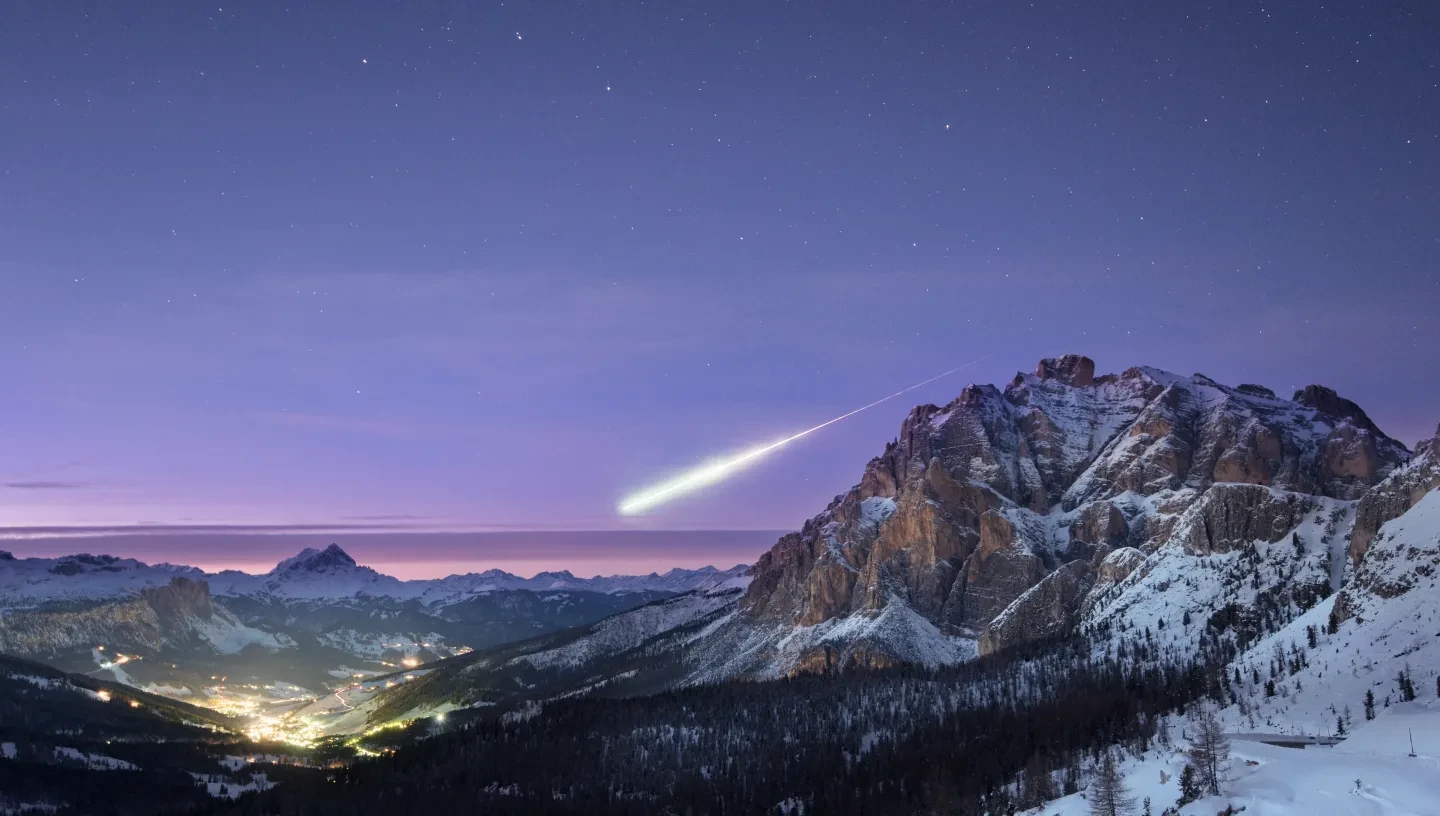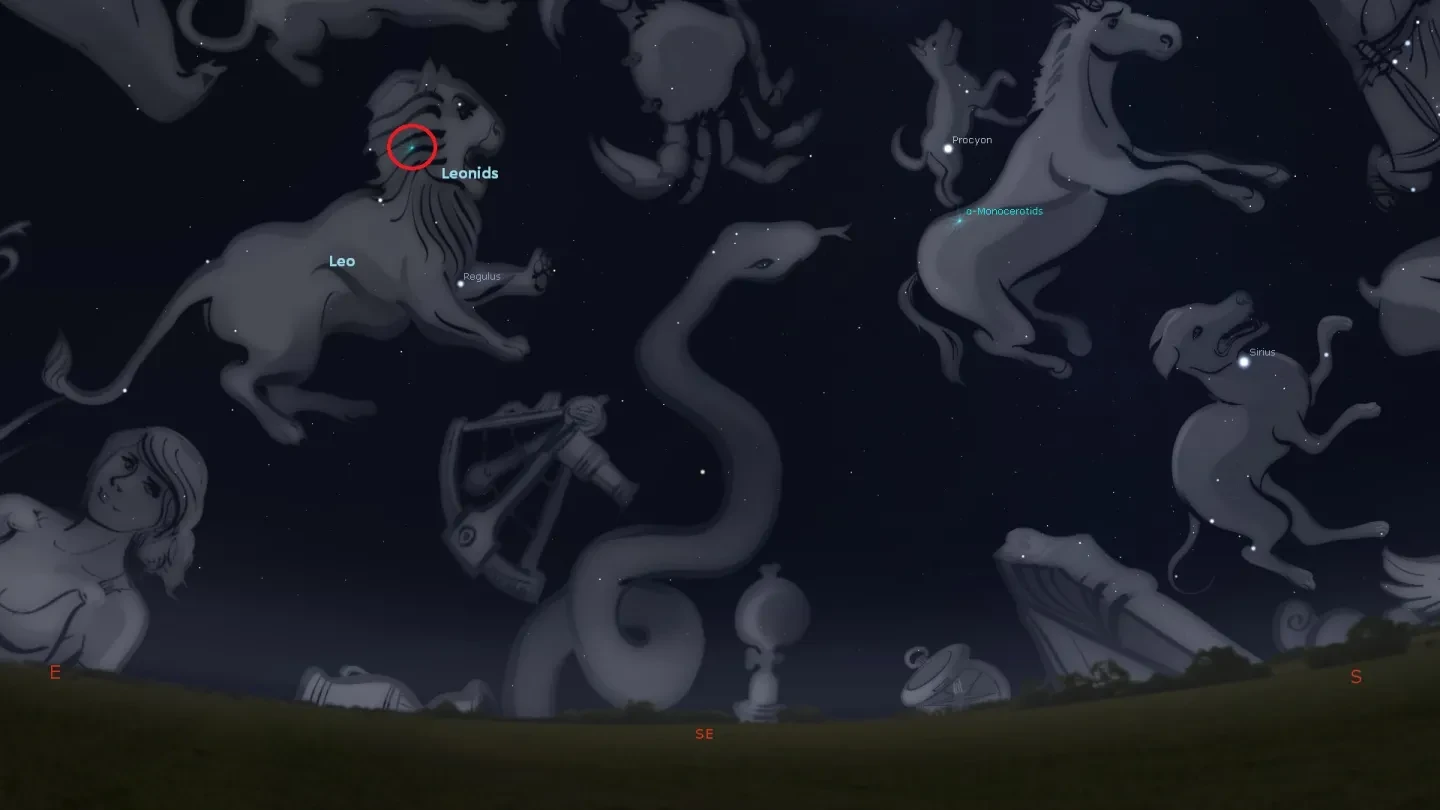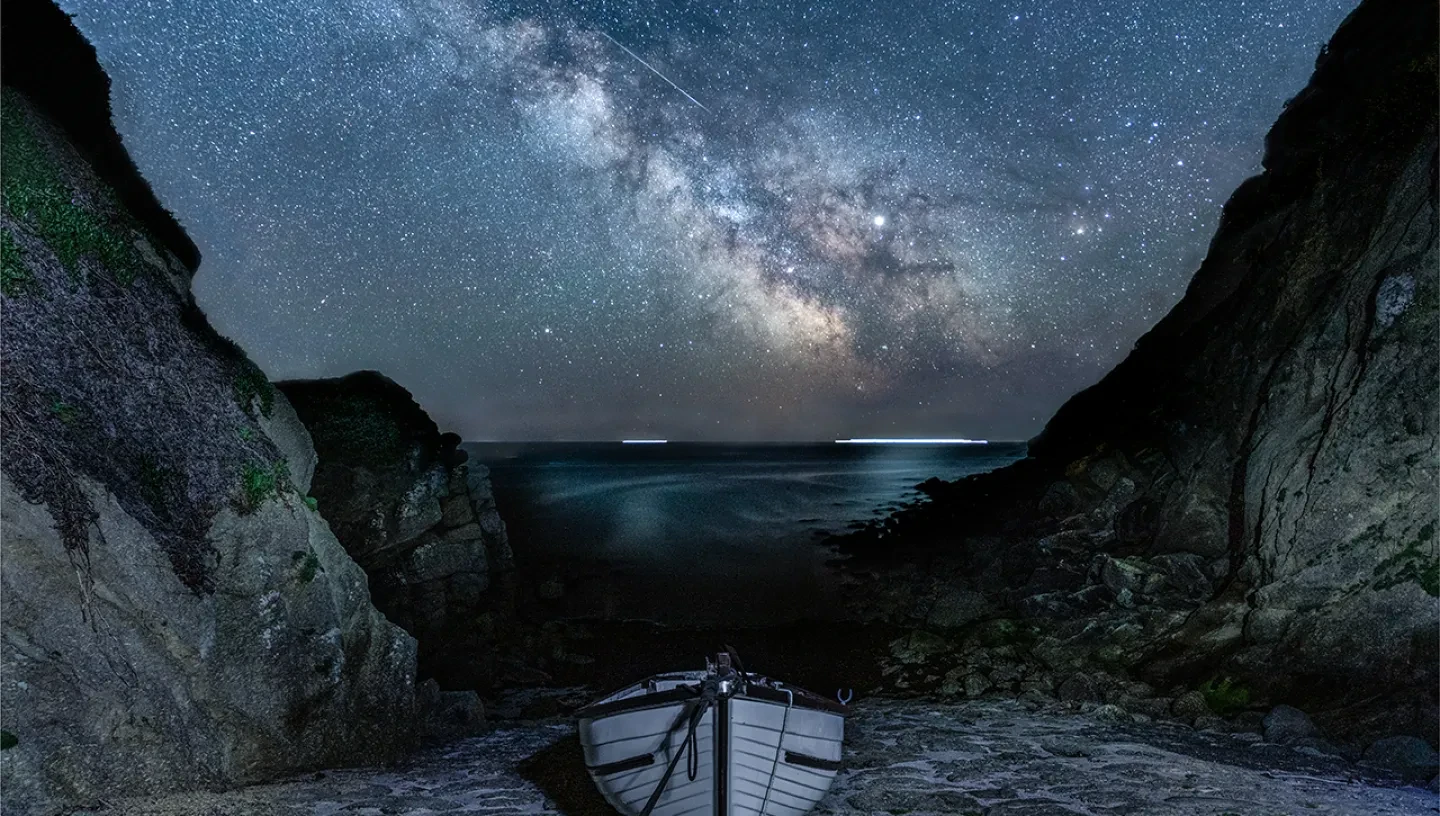
The Leonids are usually one of the more prolific annual meteor showers, with fast, bright meteors.
In 2025, the Leonid meteor shower will be active from 6-30 November and peak on 17 November.
What is the Leonid meteor shower?
The Leonid meteor shower is associated with the Comet 55P/Tempel-Tuttle.
The radiant (the point where the meteors seem to stream from) is at the head or 'sickle' of the constellation Leo the Lion, hence the name.
As the comet follows its path around the sun, it leaves a path of tiny debris. The cometary debris enters our planet’s atmosphere at speeds of up to 70 kilometres per second, vaporising and causing the streaks of light we call meteors.
Find out the difference between an asteroid, a comet, a meteor, and a meteorite.
When is the Leonid meteor shower in 2025?
| SHOWER NAME | DATE OF MAXIMUM | NORMAL LIMITS | PEAK RATE/HOUR | DESCRIPTION |
|---|---|---|---|---|
| Leonids | 17 November | 6-30 November | 15 | Fast bright meteors with fine trains. Associated with Comet Tempel-Tuttle |
Find out more about other meteors and meteorites around the year
How can I watch the Leonid meteor shower?
Hunting for meteors, like the rest of astronomy, is a waiting game, so it's best to bring a comfy chair to sit on and to wrap up warm as you could be outside for a while.
They can be seen with the naked eye so there's no need for binoculars or a telescope, though you will need to allow your eyes to adjust to the dark. However, if you miss the peak, the shower continues at a reduced rate for several days either side, so there should be plenty of chances to see the display.
Where is best to watch the Leonid meteor shower?
For the best conditions, you want to find a safe location away from street lights and other sources of light pollution. The meteors can be seen in all parts of the sky, so it’s good to be in a wide open space where you can scan the night sky with your eyes. But if you trace the paths that the meteors take, they seem to originate from the constellation of Leo.
In 2025 the Leonid meteor shower's maximum occurs a few days after full Moon, making viewing conditions quite unfavourable as the Moon's natural light pollution will affect visibility.
If you manage to get any pictures of the Leonid meteor shower then we'd love to see them. You can find us on Facebook or Twitter.
Meteor storms
About every 33 years (the period of Comet Tempel-Tuttle), the Leonids produce meteor 'storms' when hundreds or even thousands of shooting stars can be seen. Such storms were seen in 1799, 1833, 1866, 1966 and 1999-2001 (although the expected 1899 and 1933 storms were disappointing). The 1833 storm was particularly spectacular, with an estimated 100,000 meteors per hour. The 1999-2001 storms produced about 3000 per hour.
Leonid facts

- If you trace the path that the meteors take, they seem to originate from a point in the constellation of Leo - hence the name.
- The beautiful streaks we see in the night sky can actually be caused by particles as small as a grain of sand!
- The cometary debris enters our planet’s atmosphere at speeds of up to 70 kilometres per second.
- The Leonid shower has shown extremely high activity in various years, reaching thousands of meteors an hour!

Meteor shower guide
Header image: Entering the Atmosphere © Ollie Taylor - shortlisted in Astronomy Photographer of the Year 2018

